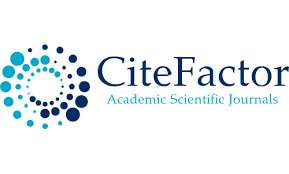METHODS OF CHEMICAL EXPANSION OF ROOT CANALS
Kholboeva Nasiba Asrorovna
Samarkand State Medical University, Faculty of Dentistry, Department of Therapeutic Dentistry, Assistant
Jumaev Shokhrukh Baxrom Ugli
5th year student of Samarkand State Medical University
Keywords: root canal therapy, chemical expansion, sodium hypochlorite, EDTA, passive ultrasonic irrigation, sonic irrigation, laser-activated irrigation
Abstract
Chemical expansion techniques are integral to the success of root canal therapy, enhancing cleaning, shaping, and disinfection. This article explores prominent methods including sodium hypochlorite irrigation, ethylenediaminetetraacetic acid (EDTA) chelation, passive ultrasonic irrigation (PUI), sonic irrigation, and laser-activated irrigation (LAI). Sodium hypochlorite's antimicrobial properties dissolve organic matter, while EDTA chelates calcium ions, removing the smear layer. PUI utilizes ultrasonic energy for enhanced debris removal, while sonic and LAI employ sonic and laser energy, respectively, to improve irrigant dispersion. Understanding these methods enhances treatment efficacy and patient outcomes.
References
Mohammadi, Z., & Giardino, L. (2014). Chemical and antimicrobial properties of sodium hypochlorite in endodontics. In Journal of Dentistry, 42(8), 961–972.
Zehnder, M. (2006). Root canal irrigants. Journal of Endodontics, 32(5), 389–398.
van der Sluis, L. W., Versluis, M., Wu, M. K., Wesselink, P. R. (2007). Passive ultrasonic irrigation of the root canal: A review of the literature. International Endodontic Journal, 40(6), 415–426.
Macedo, R. G., Wesselink, P. R., Zaccheo, F., Fanali, D., van der Sluis, L. W. (2010). Reaction rate of NaOCl in contact with bovine dentine: effect of activation, exposure time, concentration and pH. International Endodontic Journal, 43(12), 1108–1115.
Neelakantan, P., Cheng, C. Q., Mohanraj, R., Sriraman, P., Subbarao, C., Sharma, S. (2015). Antibiofilm activity of three irrigation protocols activated by ultrasonic, diode laser or Er:YAG laser in vitro. International Endodontic Journal, 48(6), 602–610.

















